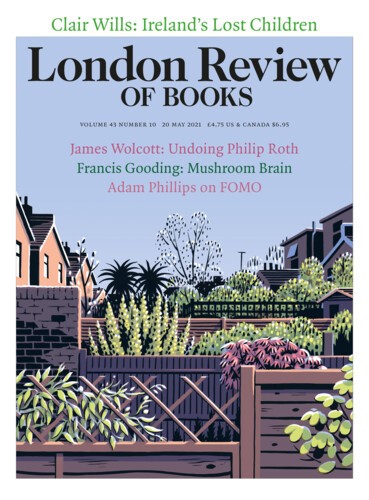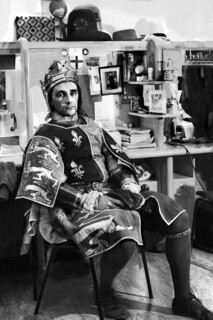Stage actors tend to be judged on how they cope in front of an audience rather than backstage, but dressing room etiquette is definitely a thing. Some performers do great work in the afterglow, pouring drinks and accepting tributes from visitors; others jitter and sniff like voles returned from a savage encounter with daylight. At London’s Duchess Theatre one night, Edna O’Brien and I climbed a million steps to the dressing rooms to congratulate Mark Rylance and his co-star on their performances in Beckett’s Endgame. It was a thankless journey. Rylance had no booze, and his co-star, still smarting from the review in the Guardian, tried to recruit us into writing to Michael Billington to ask him how, in the name of God, he could be so unmoved.
If people ask you to perch your bum among the tubs of talcum powder, solely for the purpose of telling them how wonderful they are, they might at least produce a thimble of champagne. There are stars in this department. First, Fiona Shaw, an actress who has Olivier awards and a Bafta, but has yet to be nominated for Dressing Room Goddess of All Time, which she would certainly win. Starring in The Testament of Mary at the Walter Kerr Theatre in New York, Shaw threw herself in and out of tepid lagoons, tore around the stage smoking reefers, suffering beautifully as the mother of Christ, but she still arrived in her dressing room wearing a huge smile and cracked open a bottle of whisky, which she proceeded to splash around. She had crisps, she had olives, and any number of anecdotes about Broadway. It was a scene that she had staged and directed herself.
My second award for backstage brilliance goes to the Scottish actor Alan Cumming. It started when he was playing the MC in Cabaret at Studio 54. Not long into the first run, it became obvious that the afterparty in his dressing room was sublimely consonant with the show itself. In time, Cumming attracted a drinks sponsor, and he took the party from venue to venue, from country to country, his dressing room hung with a neon sign saying ‘Club Cumming’. Then his backstage disco became an actual club, and can be found, with its theatrical origins intact, at East Sixth Street, right by Tompkins Square Park. The boy from Carnoustie has raised the mirror-lights soirée to a high art, so, if he ever asks you round, say yes, and bring your dancing shoes, because you’re likely to be doing the cha-cha with Liza Minnelli.
The quieter time in the average dressing room lies between the warm-up exercises and curtain up, a period known as ‘the half’. Actors check their make-up and mutter their lines, ‘getting into character’ and converting nervous energy into concentration. You hardly ever see an actor at the half, but Simon Annand has worked for decades in backstage bunkers and corridors, and a few years ago produced a book of photographs, The Half, which capture these moments of aloneness. ‘Their life is a voluntary dream; a studied madness,’ Hazlitt wrote of actors, and we see them in Annand’s book, their fear and frivolity, something strangely universal to people on the brink of performance. ‘If acting were a religion,’ the producer Michael Kustow wrote, ‘you might call the half the ascent towards a part. Whatever has occurred during the day must be channelled and contained in readiness for the work that lies ahead. This journey, from person to persona, is a private one.’
Annand’s photographs gently deconstruct the sorcery of the half. His new book, Time to Act (Terra, £39.95), features yet more photographs from the limelight graveyard and is deserving of another round of applause. In the introduction, Cate Blanchett writes of the dressing room as a place ‘full of superstitions’. English superstitions have always been natively theatrical: audiences – and citizens – love the idea that class and manners are chiefly performative; they play up to it. There’s a striking picture in Time to Act of Rylance in 2010, just about to go onstage in Jerusalem at the Apollo Theatre. He is tattooed, staring at the future, beyond that evening’s performance. But my mind goes back to Annand’s earlier portrait, where we see Rylance in readiness for Henry V at the Globe in 1997. His gaze suggests he’s an actor who, at the half, is more than halfway into character, already unto the breach, where ‘all the youth of England are on fire.’ There are aides-mémoires on the walls of his dressing room, historical pics and a pile of texts. Off to one side are his kettle, his sprays and jars of throat sweets. This is the actor’s last stop before unreality, and so it’s a kind of limbo. Rylance was younger then, but there’s still no booze in sight, and I doubt he would have thrived at Club Cumming. But he’s made the dressing room a stage before the stage, a play before the play. Kingship is in the air.
Send Letters To:
The Editor
London Review of Books,
28 Little Russell Street
London, WC1A 2HN
letters@lrb.co.uk
Please include name, address, and a telephone number.


